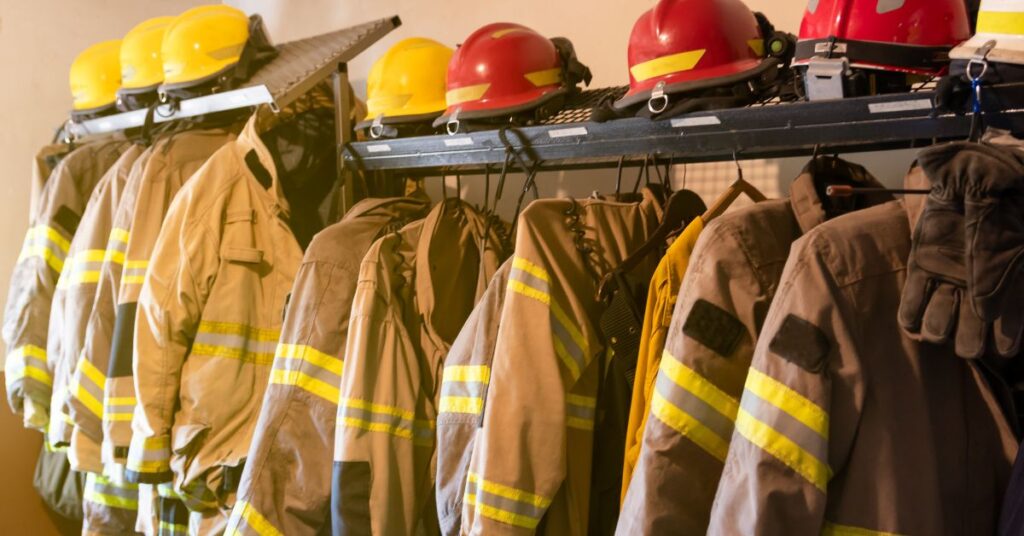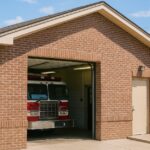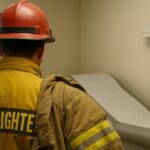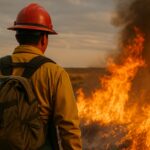According to local news broadcaster 9News, the Colorado Division of Fire Prevention and Control (DFPC) was recently terrified by the conditions Colorado’s firefighters currently work with. During a tour of fire training facilities around the state, they found many rural jurisdictions must make do with 30-year-old, outdated PPE.
This is a clear example of money constraints jeopardizing the health and safety of firefighters. But after the shock, will anything change?
Who is Most Affected?
Ill-fitting gear and old equipment are not exclusive to one jurisdiction, says Anusha Roy. However, the situation is markedly more dramatic in rural areas and small towns. In particular, fire fighting units in West Douglas County showed some of the most critical shortages.
On average, approximately 70% of firefighters in Colorado are volunteers. This trend is much stronger in rural areas, where entire units are staffed by regular citizens, who need to combine their civic duty with their full-time jobs. As a result, the consequences of a long-term injury can also jeopardize their family’s livelihoods. Most of these volunteers work with underfunded agencies, who see their resources stretched to the limit each wildfire season.
What Risks are they Facing?
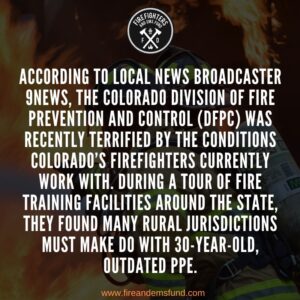
By working with equipment that is well past its intended lifespan, firefighters dramatically raise their own risk of suffering from a workplace accident. This may mean immediate burns and injuries from broken or worn down suits, as well as the effects of long-term exposure to fires.
9News reporters saw many such fire protection suits. Many have holes in them, as well as fraying seams. In some cases, the reflective bands are worn out or improperly attached to the overall suit. Helmets and respirators have lost their seal, letting dangerous volatile particles in.
Even when equipment is not directly damaged, it may be too old and outdated. This poses additional risks: for example, many older fire protection suits are significantly heavier than newer models. The stiff fabric can hinder movement and it’s notoriously harder to clean. Combined with oxygen tanks, helmets, and masks, these older models can weigh as much as 80 pounds.
Unfortunately, 80 pounds of extra body weight don’t mix well with the hot temperatures and physical exertion of a structural fire. The added stress is now linked to a higher likelihood of a heart attack – which, alongside cancer, constitutes one of the most frequent causes of premature death for firefighters.
Is Help Coming?
For Lisa Pines of the DFPC, circumstances are about to improve. She stated that her agency will deliver a grant of $5 million to speed up the purchase of new equipment. However, this money is to be distributed among 84 agencies. Combined, the recipient agencies have sent equipment requests for almost $17 million.
Meanwhile, a bill from the Colorado Senate will allocate an extra $10 million, which will be distributed between 2023 and 2024. So far, the West Douglas Fire Protection District has received about $200,000.
Nevertheless, the unit’s volunteers will continue to respond to fire calls, their unsuited gear in tow. Even if it means worrying their families or endangering themselves: ultimately, they know they are their community’s only line of defense in the event of a fire.
Over the past three years, healthcare staff shortages have periodically made their way into the headlines. But none of them may be as critical or urgent as the current lack of EMTs, paramedics, and ambulance personnel.

